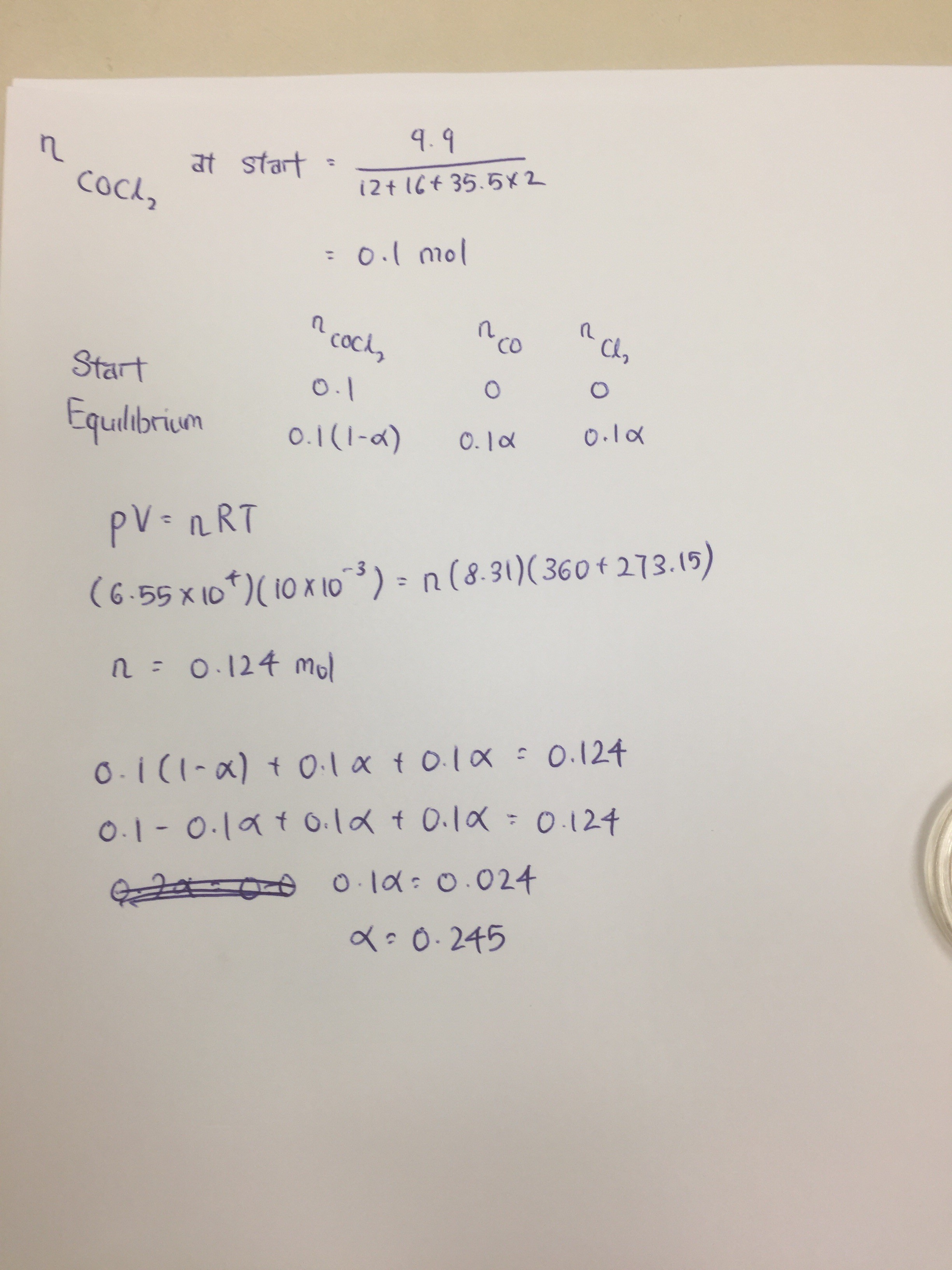Christmas MT's answer to Noorus 's Junior College 1 H2 Maths question.
done
{{ upvoteCount }} Upvotes
clear
{{ downvoteCount * -1 }} Downvotes

Not math, but close enough.
The degree of dissociation "x" (or "alpha" in the picture), is just technical speak for "the fraction of the substance that reacted".
So let's do things one at a time. First find the number of moles of COCl2 (I used O-Levels from memory, not sure whether they increase the number of significant figures in A-Levels).
Then construct the table as shown. At the start, there's 0.1 mol of COCl2 and 0 mol of the others. At equilbrium, a portion "x" of the 0.1 mol COCl2 would have reacted to form 0.1x of CO and 0.1x of Cl2, leaving with (0.1)(1-x) mol of COCl2 remaining. (This is the problem sum aspect I was alluding to).
Next we use the ideal gas equation to find the total number of moles of gas in the container at equilibrium. Form an equation in x and we are done.
Finding the equilibrium constant is just a matter of [CO][Cl2] / [COCl2]. I think the concentration is supposed to be in the form of mol/dm^3.
The degree of dissociation "x" (or "alpha" in the picture), is just technical speak for "the fraction of the substance that reacted".
So let's do things one at a time. First find the number of moles of COCl2 (I used O-Levels from memory, not sure whether they increase the number of significant figures in A-Levels).
Then construct the table as shown. At the start, there's 0.1 mol of COCl2 and 0 mol of the others. At equilbrium, a portion "x" of the 0.1 mol COCl2 would have reacted to form 0.1x of CO and 0.1x of Cl2, leaving with (0.1)(1-x) mol of COCl2 remaining. (This is the problem sum aspect I was alluding to).
Next we use the ideal gas equation to find the total number of moles of gas in the container at equilibrium. Form an equation in x and we are done.
Finding the equilibrium constant is just a matter of [CO][Cl2] / [COCl2]. I think the concentration is supposed to be in the form of mol/dm^3.
Date Posted:
7 years ago
Thanks


